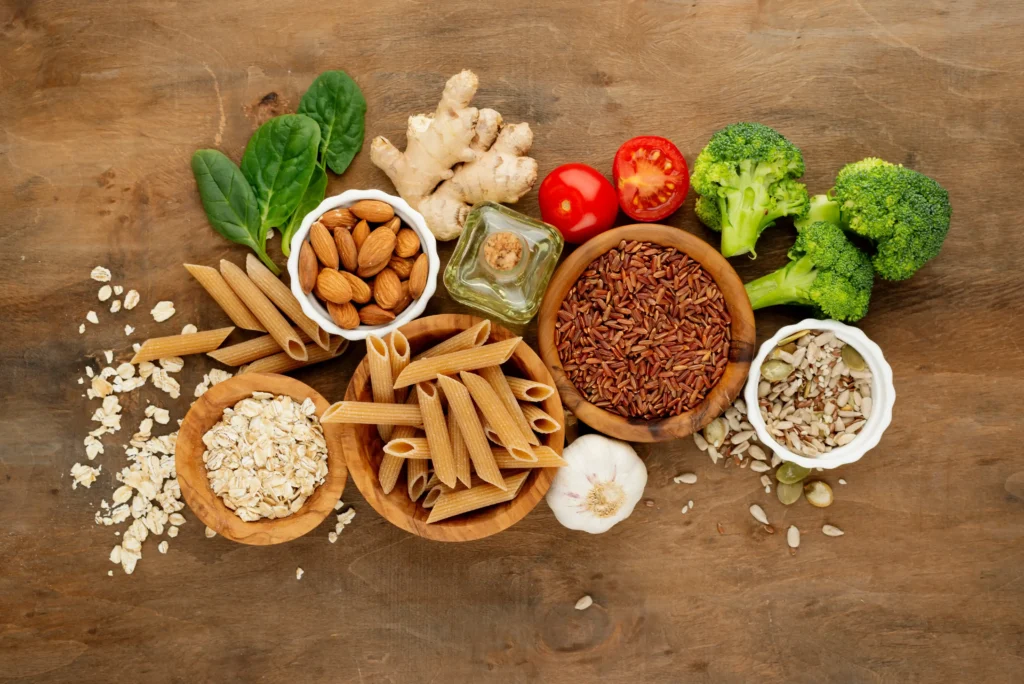Top Fiber-Rich Foods for Piles - A Natural Solution to Improve Digestive Health
Living with piles (hemorrhoids) can be challenging, especially with discomfort and dietary restrictions. A fiber-rich diet is one of the most effective ways to manage and prevent piles naturally. This blog explores the best fiber-rich foods for piles, helping ease symptoms and improving your digestive health.
Why Fiber-Rich Foods Help with Piles
Fiber plays a crucial role in softening stool and reducing constipation—a common cause of piles. It helps bulk up the stool, making it easier to pass without straining, which is essential in preventing and managing piles. Including adequate fiber in your diet can reduce inflammation, pain, and discomfort, making it a recommended choice for anyone dealing with piles.
Best Fiber-Rich Foods for Piles
1. Whole Grains
Whole grains like brown rice, oats, barley, and whole wheat are excellent fiber sources. Unlike refined grains, whole grains retain the bran and germ, which contain most of the fiber. Whole grains support smooth digestion and prevent constipation, making them essential for anyone dealing with piles.
- Oatmeal: Rich in soluble fiber, oatmeal can help reduce cholesterol and prevent constipation.
- Brown Rice: Contains both fiber and essential nutrients, promoting gut health.
2. Legumes
Legumes, including lentils, beans, peas, and chickpeas, are high in fiber and plant-based protein. They help keep you feeling full and support regular bowel movements. Including legumes in your diet can improve digestion and reduce the risk of constipation, which can trigger piles.
- Lentils: A great source of both fiber and protein, lentils are easy to add to soups, salads, and main dishes.
- Black Beans: High in fiber, they aid digestion and are known to improve gut health.
3. Leafy Greens
Leafy greens such as spinach, kale, and collard greens are packed with fiber, vitamins, and minerals. They add bulk to the stool, helping to pass it easily and reducing strain on the rectal veins. Incorporating leafy greens into your diet can also improve hydration levels due to their high water content.
- Spinach: Contains fiber and magnesium, both of which help relieve constipation.
- Kale: Known for its nutrient density, kale supports both digestion and overall health.
4. Cruciferous Vegetables
Cruciferous vegetables like broccoli, Brussels sprouts, and cauliflower are not only fiber-rich but also contain a compound called sulforaphane, which helps improve digestion. Their high fiber content helps prevent piles by keeping the stool soft and easy to pass.
- Broccoli: Packed with fiber and vitamin C, broccoli is beneficial for digestive health.
- Cauliflower: Easy to include in a variety of dishes, cauliflower aids in digestion and adds bulk to stool.
5. Fruits with Skin
Fruits like apples, pears, and berries are excellent fiber sources, especially if you consume the skin. The skin of these fruits contains insoluble fiber, which adds bulk to the stool and makes it easier to pass. Fruits also have high water content, further aiding in digestion.
- Apples: Eating an apple with the skin provides both soluble and insoluble fiber.
- Pears: Rich in pectin, a type of soluble fiber, pears support bowel health.
- Berries: Berries like strawberries, raspberries, and blueberries are high in fiber and antioxidants.
6. Nuts and Seeds
Nuts and seeds, including almonds, flaxseeds, chia seeds, and walnuts, offer a blend of fiber, healthy fats, and essential nutrients. They are a good option for those looking to increase fiber intake, but portion control is important due to their high-calorie content.
- Chia Seeds: These tiny seeds are rich in fiber and omega-3 fatty acids, making them ideal for digestive health.
- Flaxseeds: Ground flaxseeds are particularly beneficial as they are easier to digest and add soluble fiber to your diet.

Tips for Adding Fiber to Your Diet
Including fiber-rich foods for piles requires gradual adjustments to avoid digestive discomfort. Here are some tips:
- Increase Fiber Gradually: Sudden increases in fiber intake may cause bloating or gas. Start slowly and build up your intake over time.
- Stay Hydrated: Fiber works best when you drink plenty of water, as it absorbs water to create bulk in the stool.
- Include a Variety of Fiber Sources: Both soluble and insoluble fibers are important, so try to incorporate different fiber sources into your meals.
- Avoid Processed Foods: Processed foods often lack fiber and can worsen constipation, potentially aggravating piles symptoms.
Fiber Supplements - Are They Effective?
If meeting your fiber needs through diet alone is challenging, fiber supplements such as psyllium husk can be a helpful addition. However, it’s best to consult a healthcare professional before starting any supplements, especially if you are managing piles.
Foods to Avoid with Piles
In addition to including fiber-rich foods, certain foods can worsen piles and should be minimized:
- Refined Grains: White bread, pasta, and other refined grains lack fiber and can contribute to constipation.
- Spicy Foods: Spicy foods can irritate the digestive tract and worsen piles symptoms.
- Red Meat: High in fat and low in fiber, red meat can be hard to digest and may lead to constipation.
Conclusion
A diet rich in fiber is one of the most effective ways to manage and prevent piles. By including whole grains, legumes, leafy greens, cruciferous vegetables, fruits with skin, and nuts and seeds, you can support digestive health and reduce piles symptoms. Remember to increase your fiber intake gradually and stay hydrated for optimal results. Consult your healthcare provider to tailor your diet to your specific health needs, especially if you have any underlying health conditions.
For more information and support on managing piles, visit our website Dr. Sushma Peruri’s for expert advice and insights.


